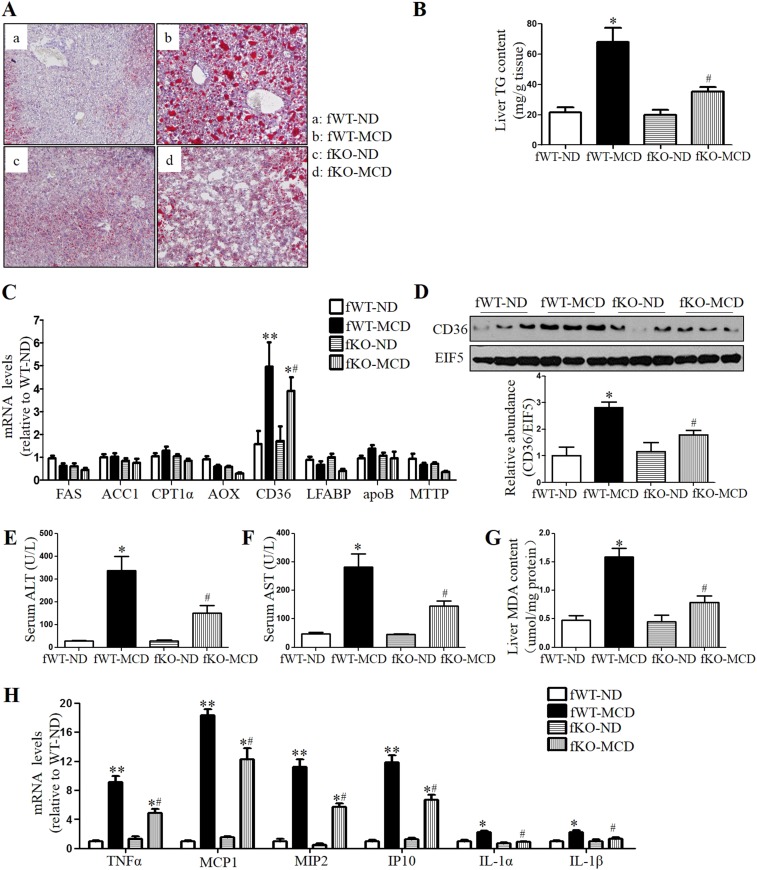Fig. S6.
CYP4A14 deficiency ameliorated MCD-induced steatohepatitis and liver injury. Female wild-type (fWT) littermates and CYP4A14−/− mice were fed with an ND or MCD diet for 4 wk. (A) Oil Red O staining showing that CYP4A14−/− mice were resistant to MCD-induced lipid accumulation in the livers. (Magnification: 200×.) (B) Biochemical assay showing that hepatic triglycerides levels were significantly lower in MCD-fed CYP4A14−/− mice than that in MCD-fed WT mice. (C) Quantitative RT-PCR analysis showing that hepatic CD36 mRNA levels were significantly reduced in MCD-fed CYP4A14−/− mice compared with MCD-fed WT mice. (D) Western blot analysis demonstrating that hepatic CD36 protein levels were much lower in MCD-fed CYP4A14−/− mice than that in MCD-fed WT mice. (E and F) CYP4A14−/− mice exhibited reduced serum ALT and AST levels after receiving an MCD diet. (G) Hepatic levels of malonaldehyde (MDA) in the liver. (H) Quantitative RT-PCR analysis of mRNA levels of proinflammatory genes in the livers. *P < 0.05, **P < 0.01 vs. fWT-ND; #P < 0.05 vs. fWT-MCD; n = 5–7. Data are presented as mean ± SEM. TG, triglyceride.

